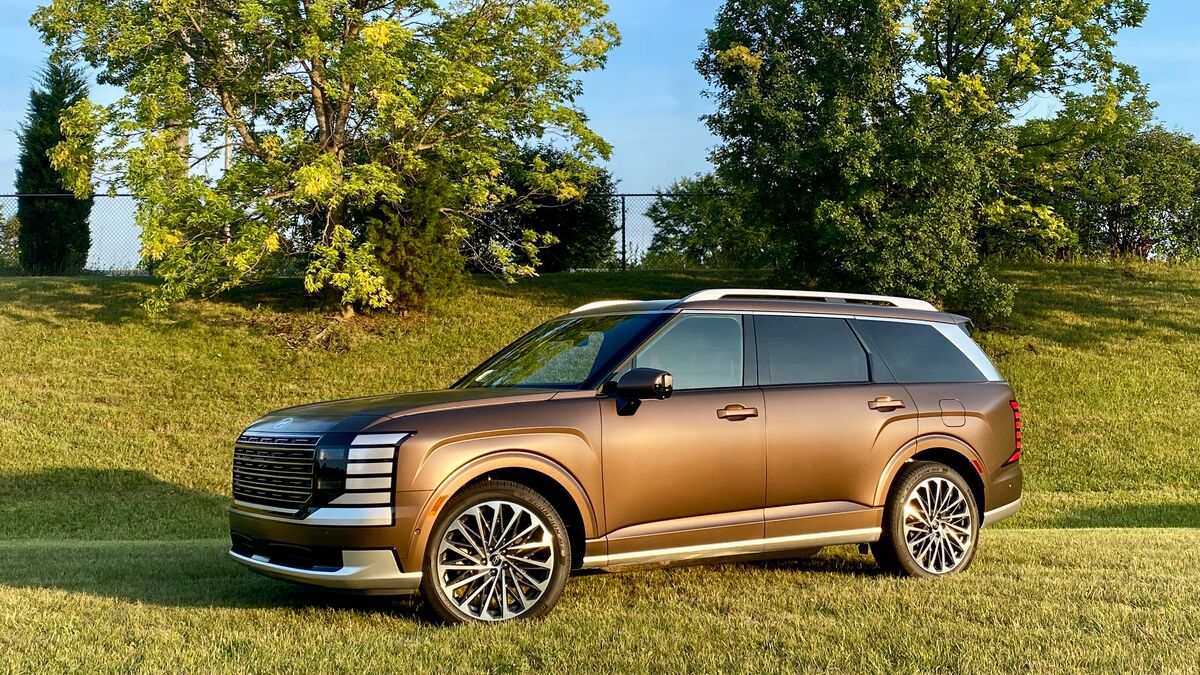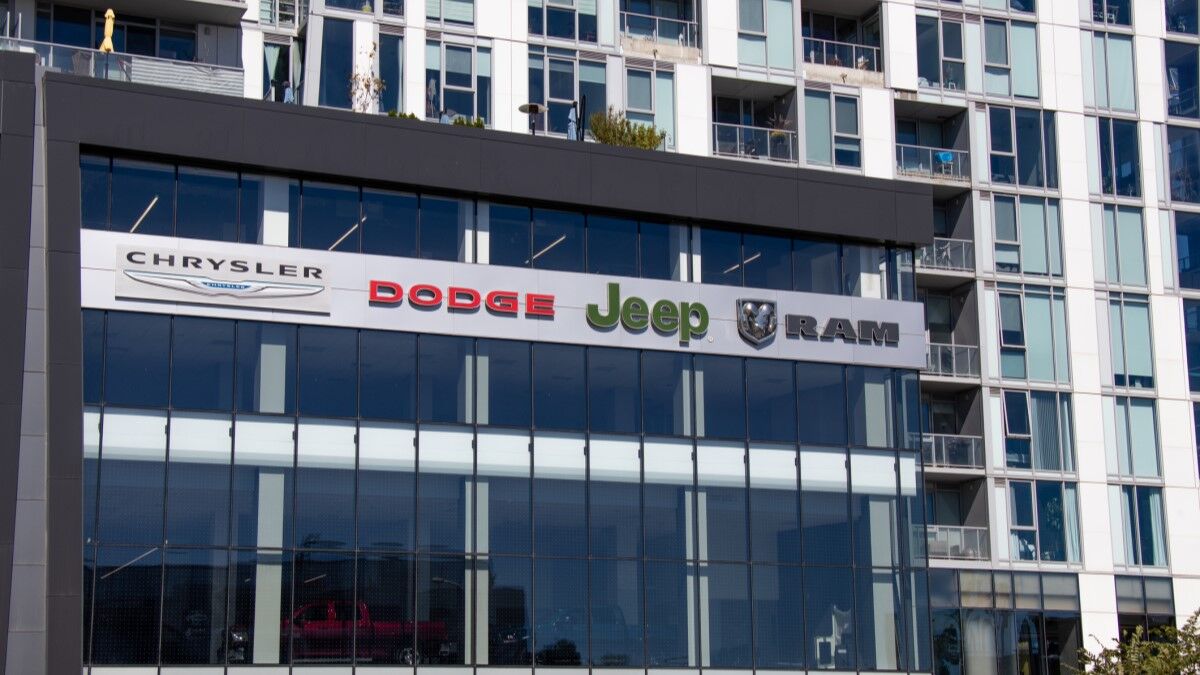As the automotive industry transitions to a battery-powered future, we’ve seen electric vehicles (EVs) likewise take the form of the most popular types of cars that shoppers buy. First came small cars like the Nissan Leaf over a decade ago, then sedans such as the Tesla Model S, and on to today’s gaggle of electric SUVs such as Tesla’s Model Y to the Hyundai Ioniq 5. Truck shoppers are also getting in on the electric action with EV pickups like the Ford F-150 Lightning and Rivian R1T.
Next up for the EV movement is a segment not necessarily on the minds of everyday drivers but one of vast importance that will still directly or indirectly affect all of us: commercial vans, like the ones that deliver all those cardboard boxes with the smiles on them, and the vehicles used by trade workers of every stripe.
Ford recently launched its E-Transit, an all-electric version of its popular Transit cargo van, and rival Ram is prepping its ProMaster EV. But they’ll both be battling another significant competitor in the van space: Mercedes-Benz, with its new eSprinter, which, if you’re following along, is an all-electric version of its Sprinter commercial van.
Formidable Player
Yes, Mercedes-Benz makes commercial vans, and a lot of them. While you may know Mercedes for its luxurious executive sedans and SUVs, the German automaker has a long history in the commercial van space.
And like its passenger cars, its cargo vans have enjoyed a higher degree of features along with sophisticated technology. Sprinter vans today have a loyal audience that ranges from delivery companies to van lifers who have transformed these big and boxy vehicles into homes on wheels ready to roam — a trait made particularly doable thanks to their available 4-wheel drive and diesel engine options.
Now comes the eSprinter, the first all-electric version of a Mercedes van, and we were among the first to drive it.
Before getting into how that went, let’s talk some important specs, starting with the price. The 2024 Mercedes eSprinter starts at $74,161, including the $2,295 destination charge, and is available for order now. That price is around $20,000 more than the Ford E-Transit, and while Ram hasn’t announced pricing on the ProMaster EV, we expect it to be in a similar ballpark as the Ford.
Class-Leading Range
So the Mercedes van requires Mercedes money, but it also has an ace up its sleeve, and that’s range. Here again, we’re still awaiting official numbers, but the Mercedes eSprinter is estimated to be able to travel up to 249 miles between charges. That’s significantly more than the Ford E-Transit’s best of 126 miles and the Ram’s max of 162 miles.
In other respects, the Mercedes eSprinter trails those rivals. It has a max payload of 2,624 pounds. The Ram can take on 3,020 pounds, while the Ford E-Transit cargo van can handle up to 3,880 pounds. At the outset, the Mercedes eSprinter is available as a 170-inch cargo van with a high roof. Its interior space is sizable at 488 cubic feet but still below the max offered by the Ram (524) or Ford (536). Like those other vans, that massive cargo area can be left empty to move cargo or upfitted with workbenches, shelving, etc. And at the moment, like its peers, the eSprinter is being sold as a cargo van, not necessarily a people mover. But again, it’s easy to imagine one of these outfitted for that use in the future. Like other Mercedes Sprinter vans, the eSprinter is made in America at the company’s South Carolina factory.
As for power, the eSprinter uses a 113-kilowatt-hour battery and an electric motor powering the rear wheels. Two output levels are offered. Standard output is 100 kilowatts; a high-output variant is good for 150 kW. Peak torque is 295 lb-ft, which just trails the Ram’s 302 lb-ft and the Ford’s 317 lb-ft. The Mercedes-Benz eSprinter can tow up to 4,277 pounds and has a top speed of 75 mph.
Regarding charging, in a best-case scenario, it can juice up from 10% to 80% capacity in 42 minutes on a DC fast charger. On an AC wall box, Mercedes says it’s more like 12.5 hours to go from empty to full.
Whether you go for the standard or high-output version, you get features such as a heated driver’s seat, cruise control, automatic emergency braking, and multi-way adjustable seats. Options include a touchscreen, automatic climate control, power driver’s seat, heated windshield, electronically folding side mirrors, electrical sliding door, and DC fast charging capability.
Driving the Mercedes-Benz eSprinter Van
So, what’s it like to drive a giant electric van? It might seem intimidating at first, but perhaps the biggest surprise is that it isn’t once behind the wheel. And – news flash – I don’t drive cargo vans every day.
Once settled inside the test vehicle, I quickly became comfortable behind the steering wheel. One that is multi-way adjustable and, in this version of the 150-kW van, was even heated. As a windowless van with a solid panel between the cab and the cargo area, the digital rearview mirror was immediately helpful, as was the optional 10.25-inch touchscreen running Mercedes’ latest infotainment system. Just as in its luxury cars, you can say, “Hey, Mercedes” to summon its voice assistant.
My first route took me south from Newport Beach, California, along Pacific Coast Highway through coastal towns like Laguna Beach and Dana Point. PCH can feel tight and narrow at times, even in a small car, so I was initially hesitant about piloting this thing through that route with its multiple construction zones, but those fears turned out to be unfounded. The eSprinter is simply easy to drive.
There are three main drive modes: Comfort, which grants you full comfort and torque; Eco, which limits power to 100 kW; and Maximum Range, which further reduces the juice to 80 kW for, you got it, max range.
I’ll get this out of the way and say that the eSprinter is not fast. Not as though it should be. It’s a cargo van, not an AMG GT. But here, Comfort mode is more relative to Sport. I left it in this mode the most, as it felt the most normal and offered good responsiveness. The other modes really throttle power output, though it should be noted that if you’re in one of those modes and floor it, the van can override the nannies and scoot you as needed. Otherwise, there just isn’t much there when you press the accelerator in the Eco and Maximum Range modes.
There are also several levels of brake regeneration. They range from strong to none. In strong, the van begins slowing aggressively when you lift off the accelerator, though the eSprinter does not offer one-pedal driving like some EVs that can bring the vehicle to a stop. There’s also a nifty D Auto mode, in which the van will automatically choose which level of regen is best based on the situation.
Otherwise, the eSprinter proved quiet and even quite comfortable in hauling our load of 400 pounds of mystery box in the back (Mercedes needs to keep some of its secrets from auto scribes). Perhaps best of all, though, was I never worried about range. I began the drive with nearly 200 miles of range showing and barely bothered to look at what was left during the test drive. I could have driven to Tijuana if so inclined.
And that might just prove to be the eSprinter’s X factor. Its range — roughly twice that of the Ford — has many upsides: less frequent charging, less range anxiety, and more ability to put on miles and get work done. Those are traits any business owner can appreciate. And just like any Mercedes-Benz vehicle, it also doesn’t hurt that this big one wears the famous and coveted 3-pointed star, signifying that this van is really something special.








